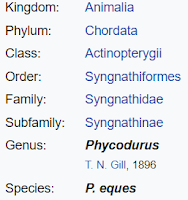Introduction of mangroves
Mangroves trees have become specialized to survive in the extreme conditions of estuaries, two key adaptations they have are the ability to survive in waterlogged and anoxic soil, and the ability to tolerate brackish waters. Some mangroves remove salt from brackish estuarine water through ultra-filtration in their roots. Other species have special glands on their leaves that actively secrete salt, a process that leaves visible salt crystals on the upper surface of the leaves.
All mangroves species have laterally spreading roots with attached vertical anchor roots. These roots are very shallow. Many species have aerial roots called as pneumatophores that take up to oxygen from the air for the roots. Some species have prop roots, extending from trunk and helps to withstand the destructive action of tides, wave, and storm surges. Many mangroves tress also have a unique method of reproduction. Instead of forming seeds that fall to soil below and begin growing, mangroves seeds begin growing while still attached to the parent plant. These seedling is known as propagules. Mangroves forests are grow in tropical and subtropical latitudes near the equator.
Mangroves habitats
Mangrove tress are grow in the intertidal or estuarine areas .They can be found in warmer areas between the attitude of 32 degrees north and 38 degrees south. And also mangroves need to live in areas where the annual temperature is above 66 degrees of Fahrenheit.
Mangroves are most commonly found in
1. River deltas
2. Estuaries
3. Coastal lagoons
4. Open coastlines
Distribution
The estimating of the area that covered by mangroves world wide range is between from 84000 Km2 to 136000 Km2 including the 123 countries. The distribution, density and the species compositions are determined by the water and air temperature during in the winter, exposure to the wave action and the tidal currents, range of the tide, type of sediment and the chemistry of sea water. In Sri Lanka, estimated area of mangroves is approximately 15670ha and mangrove forests mainly can be found in northern coast, eastern coast, and southern coast, western and north western coasts as well as Negombo, Chilaw and Puttalam lagoons and the Kala Oya estuary.
Types and identify of mangroves
1. Red mangrove
Red mangroves can be easily identified by their prop roots, which are tangled, reddish, aerial roots that originate from the trunk and branches. Their leaves are 1 to 5 inches long, broad and blunt on the tip, shiny, deep green, on top and paler on the underside.
2. Black mangrove
Black mangroves can be identified by numerous finger like projections, called pneumatophore that protrude from the soil around the tree’s trunk. Leaves are oblong, shiny green on top and covered with short dense hairs on the underside .Black mangroves are usually found in slightly higher elevation upland from red mangroves.
3. White mangroves
White mangroves have no visible aerial root system like red and black mangroves. The easiest way to identify white mangroves is by the leaves. The leaves are up to 3 inches long, elliptical, yellowish in color and two distinguishing glands at the base of each leaf blade where the stem begins. White mangroves are usually located in elevations higher and farther upland than either black or red mangroves.
Adaptations
Mangroves have several unique adaptations to them for survive in saline and inundated conditions. Adaptations are mainly for Physical stability, salt tolerance, anaerobic sediments and reproduction.
1. Physical stability - Root adaptations make it possible for mangrove to live in soft sediments. As well as shore line root adaptations increase the stability of mangrove tress in the soft sediments along shorelines. Red mangroves have the prop roots, descending from its trunk and branches and the black mangroves have shallow wide spreading roots in surrounding of its trunk for this stability purpose.
2. Salt tolerance Adaptation – mangroves have salt exclusion or the excretion adaptation for allowing survival in the saline environments. The ability to exclude salts occurs through filtration at the surface of the root. Root membranes prevent salt from entering while allowing the water to pass through. This is effective at removing the majority of salt from seawater. Red mangroves are example for salt excluder while white and black mangroves are salt excretes.
Mangroves also need adaptation to conserve water. Leaves have a thick waxy cuticle or dense hair to reduce transpiration, or orientate their leaves to avoid the burning sun. Most evaporation loss occurs through stomata- pores in the leaves- so these sunken below the leaf surface where they are protected from drying winds.
3. Anaerobic sediment Adaptation –mangroves trees are adapted for survival in oxygen poor or anaerobic sediments through specialized root structure. Mangroves have poorly developed, shallow below-ground root system and the well-developed aerial roots. These aerial roots allow for the transport of atmospheric gases to the underground roots. Red mangroves have prop roots extending from the trunk and adventitious roots from the branch. Black mangroves has not prop roots, small air roots can be seen in the extending vertically from the soils surrounding the trunk. These air roots are known as pneumatophores.
4. Reproductive adaptations – all mangroves trees have two reproductive adaptations –viviparity and propagule dispersal. Mangroves are reproductive by flowering with pollination occurring via wind and insects. Once pollination occurs, the seeds remain attached to the plant tree. They germinate into propagules before dropping into the water below. This ability is known as viviparity. Ecosystem services
Coastal protection- mangroves help to mitigate the threat of inundation and devastation by storm surges and cyclones, building a living seawall that can slow or halt erosion, rapidly diminish wave- energy, and temper flood flows driven by storm surges.
Carbon sequestration – deposition of plant litter and woody debris, root accumulation and algal mat development to carbon storage. Belowground biomass represents 85% of the total biomass in many mangroves forests. It is estimated that carbon burial by mangroves at about 180gc/m /year.
Food production – mangrove communities are recognized as highly productive larger quantities of organic matter to adjacent coastal waters in the form of detritus are live animals. The detritus serves as a nutrient source and is the base of an extensive food webs. And also mangroves ecosystem serves as shelter, feeding and breeding zones for crustaceans, mollusks, fishes and migratory birds.
Denitrification - anaerobic denitrification and nitrogen fixation by certain bacteria and cyanobacteria associated with mangrove mud and with above ground root system can improve water quality and waste water inputs.
Threats
mangroves are threatened in their existence by several causes, generally related to human activities.
· Variation in river and surface runoff that deprive tropical coastal deltas of fresh water and sediments, entails reduction of species diversity and organic production. This results in alternations of both the terrestrial and aquatic food web and reduces habitats available to species to higher trophic level.
· Soil reclamation for agriculture and aquatic reduces regional biodiversity due to loss of mangrove habitats. Many mangrove forests worldwide have been cleared to make way for shrimp aquaculture.
· Clearcutting mangrove forests and replacement with dikes create ponds with anoxic water that increases the level of Sulphidess in the soil and increase the PH leading to major shrimp losses.
· Another negative impact of human on the mangrove habitat is the use of pesticides and fertilizers. By that it caused to increase the Nitrogen and Phosphorus and after that caused to oxygen depletion in the water and promote the growth of algae. Finally it caused to eutrophication.
· Another issue is clearcutting mangroves for hardwood. Due to the resistant against termites this wood is important export product for building constructions.
· Coastal developments, using chemical for waste water treatments, spills of oil, toxics and climate changes are threats for mangroves.
Mangroves replanting programs are occurring in many places in worldwide and celebrated on 26th of July in every year aims to raise awareness of the importance of mangrove ecosystems.
Article by- Amodya Adhikari
Reference
· http://www.pgis.pdn.ac.lk/yrf/sci2015/weerasinghe_wijesinghe.pdf
· http://www.marinespecies.org/introduced/wiki/Mangroves


















































